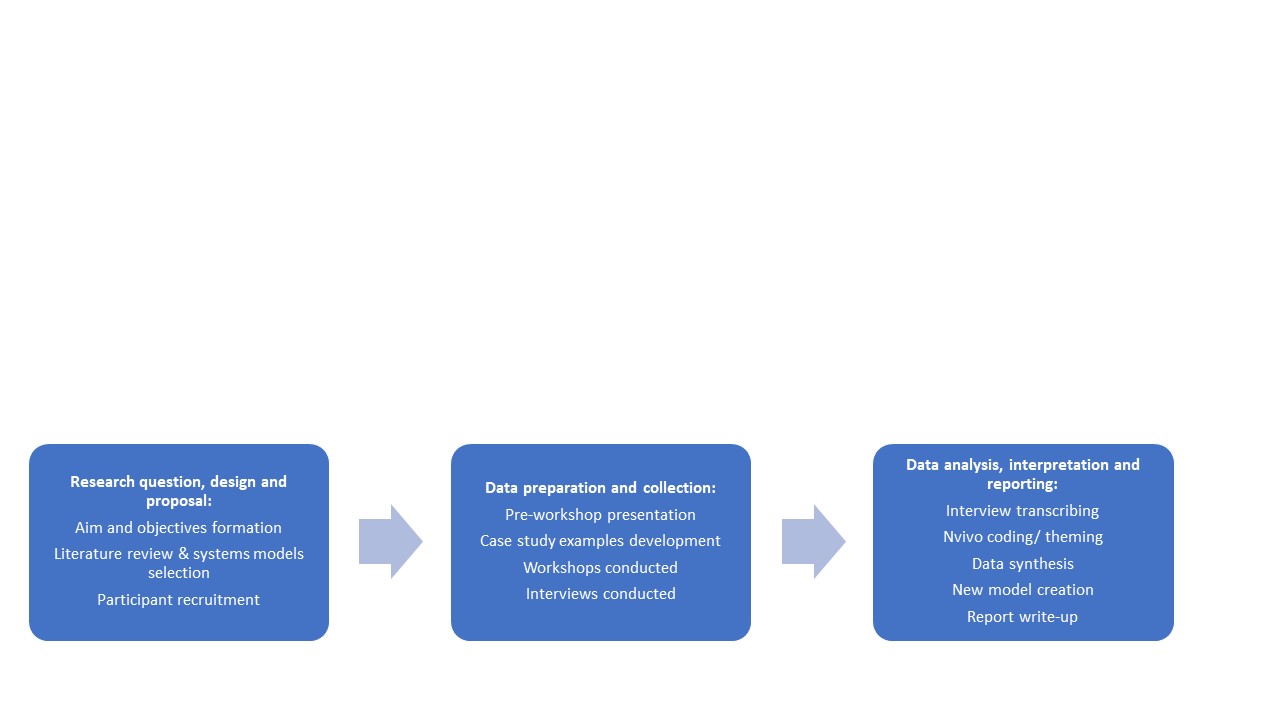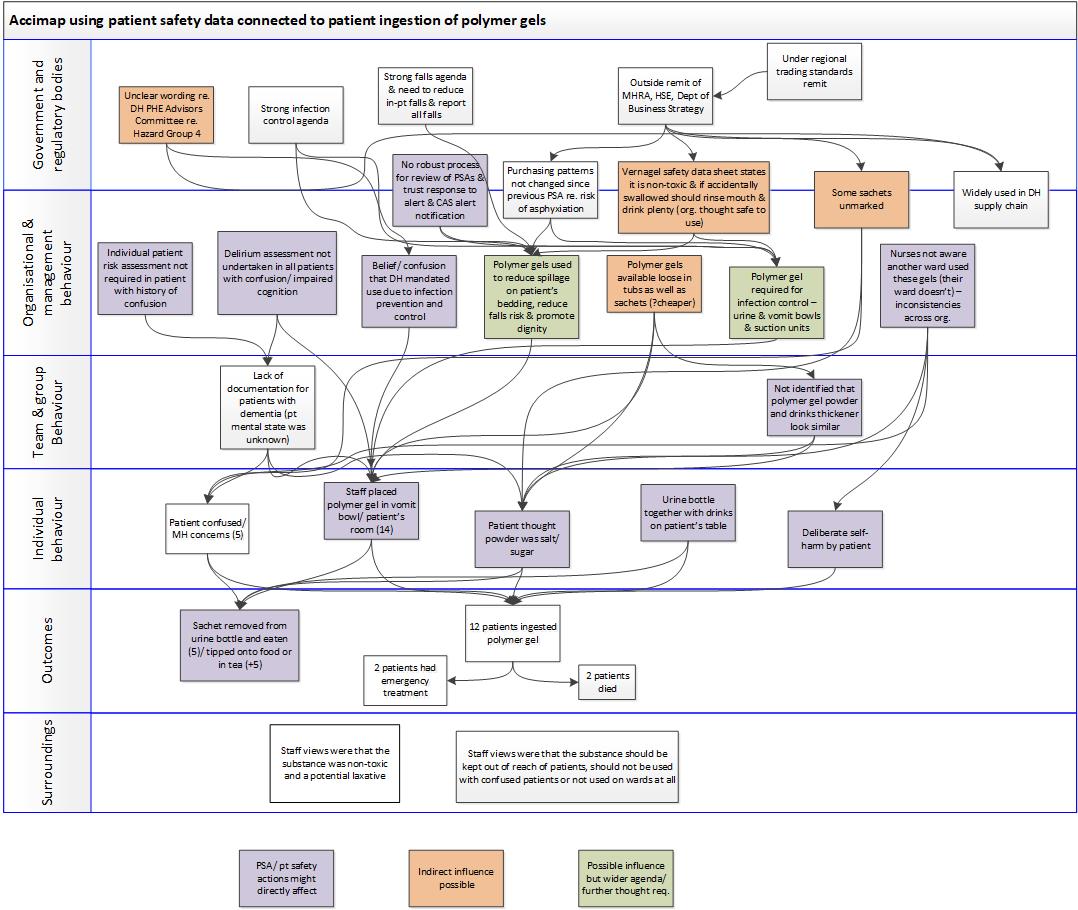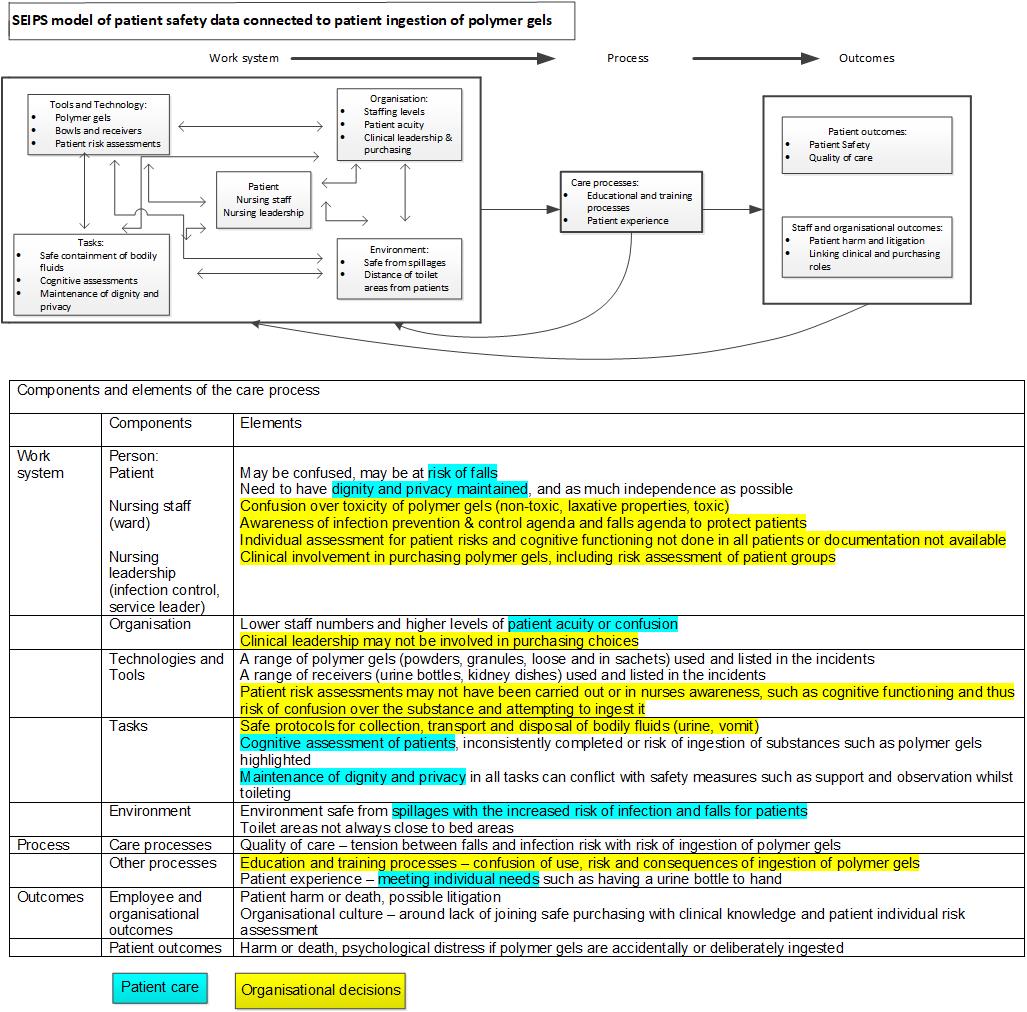Major Project
Systems Models for Patient Safety: utility and usability for multiple incident… [Read more]

Research Process Overview

Accimap of patient safety issue: the accidental ingestion of super-absorbent polymer gels
This model was created by the researcher/ practitioner using multiple incident reports and related intelligence

SEIPS of patient safety issue: the accidental ingestion of super-absorbent polymer gels
This model was created by the researcher/ practitioner using multiple incident reports and related intelligence
Jayne Wheway
Systems models have achieved much in adverse event investigations in high-risk industries but they have been little used in healthcare or for multiple incident reports. This study aimed to test systems models in this environment with the NHS national patient safety team. 4
Summary
The national patient safety team in England review and analyse multiple patient safety incidents in order to develop risk reduction strategies. This is carried out via an iterative theme-based method. However, in order to improve this system- based approach the use of systems models was proposed. This study tested the usability and utility of two models, Accimap and Systems Engineering Initiative for Patient Safety (SEIPS), in being able to explore and understand patient safety issues brought to the national patient safety team.
Methods
The ten participants were recruited from the national patient safety team. An online presentation and virtual case study-based workshops provided two hours of education and training on systems theory and the systems models. Interviews were then conducted via video conference and analysed using NVivo analysis software.
Findings
Accimap was viewed useful in providing a visual comprehensive overview of the issue framed within a hierarchical system. It was thought to be helpful for brainstorming the elements of the issue, showing where actions should be targeted and capturing themes. The usability of Accimap was uncertain for some due to the arrows displaying relationships and connections between the elements, deemed as chaotic and confusing. Conversely, the familiarity of the components and logical structure defined SEIPS usability. However the non-hierarchical clinical-level focus did not align with the patient safety alert development processes and the detail required in the categories created some apprehension on the utility for SEIPS.
Conclusion
The participants of the study, healthcare practitioners within the team, declared satisfaction in the utility of both models for their unique strengths and attributes but also a concern for the usability of them in terms of complexity and coaching time required for independent practice. It is suggested that the human factors practitioner – healthcare practitioner gap can be closed, and collaboration strengthened by education, coaching and mentoring relationships between the two groups, led by the increasing number who embrace their membership to both. Future research may be to develop a mixed model, joining Accimap and SEIPS models, and possibly others, and to test it across local NHS organisations for multiple incident patient safety issues.
Major Project
Systems Models for Patient Safety: utility and usability for multiple incident analysis